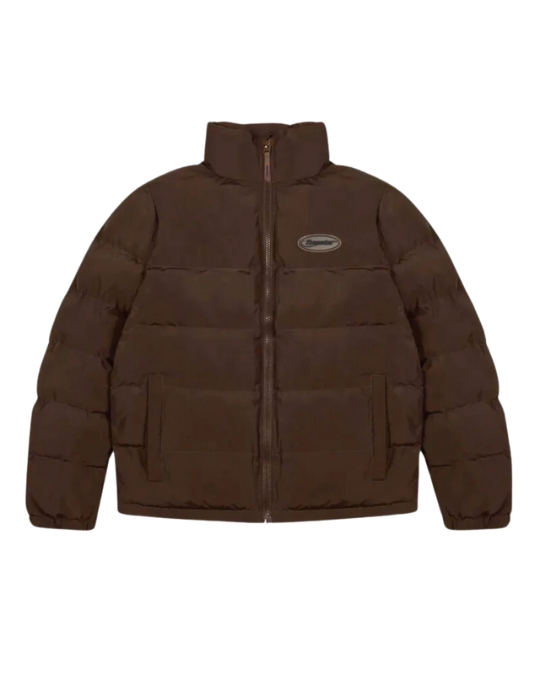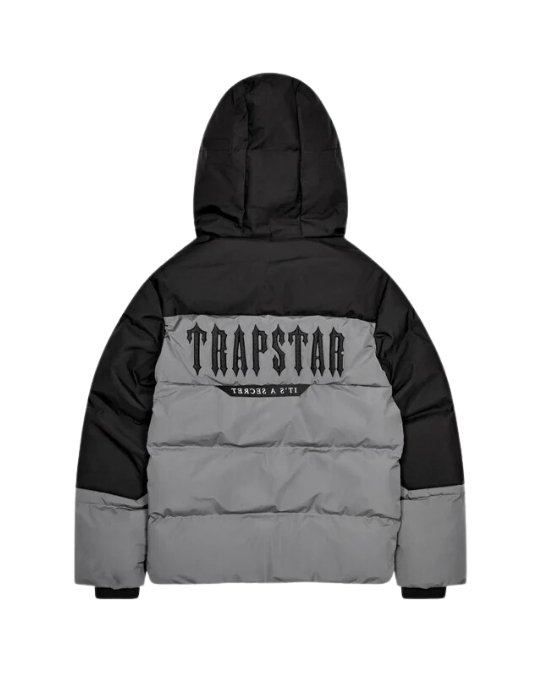Unmasking the Trapstar Game: How to Spot a Fake
The streetwear scene is as vibrant as it is competitive, and Trapstar stands proudly at its heart. With its bold designs and cultural influence, it’s no surprise that the brand has become a target for counterfeiters. For fashion enthusiasts, streetwear fans, and authenticity seekers, knowing how to distinguish an authentic Trapstar piece from a fake is essential. In this guide, you’ll learn the key signs of counterfeit Trapstar products, how to verify their authenticity, and why supporting the original brand matters.

The Rise of Trapstar and the Counterfeit Conundrum
Trapstar’s popularity has surged in recent years thanks to its distinctive style and cultural significance. However, with fame comes the inevitable rise of counterfeit products. These fakes not only deceive consumers but also undermine the brand’s integrity. For those who genuinely appreciate Trapstar’s unique aesthetic, identifying actual products is crucial for style and substance.
Authentic Trapstar items are more than just clothing; they’re a statement of individuality and quality. Ensuring you’re purchasing the real deal means investing in the brand’s vision and craftsmanship. Let’s explore how to identify fake Trapstar products and protect your wardrobe from imposters.

Key Signs of a Fake Trapstar Product
Inferior Material Quality
One of the most telling signs of a counterfeit Trapstar item is the quality of materials used. Authentic Trapstar pieces are crafted with high-quality fabrics and meticulous stitching. Counterfeits often fall short, using cheap materials that lack durability and comfort. The stitching on fake items may be uneven or loose, compromising the finish. Always inspect the fabric and stitching closely to ensure you invest in an authentic piece.
Incorrect Logos and Fonts
Trapstar’s branding is iconic, but counterfeiters often make mistakes when replicating logos and fonts. Look for inconsistencies in size, placement, and font style. Genuine Trapstar items have precise and consistent branding. If you notice any irregularities in the logo or font, it’s a red flag that the product may be a fake.
Poor Packaging
Authentic Trapstar products come with high-quality packaging and official tags. Counterfeit items might be missing these tags or use low-quality packaging that feels flimsy and generic. Always check for official tags and packaging details to confirm the authenticity of your purchase.

Checking Product Details
Authenticity of Zippers, Buttons, and Hardware
The small details can make a big difference. Authentic Trapstar items feature high-quality zippers, buttons, and other sturdy and well-crafted hardware. Counterfeit products often use cheaper alternatives that don’t stand up to scrutiny. Examine the hardware on your item closely to ensure it meets Trapstar’s standards.
Accurate Colors and Designs
Trapstar’s designs are known for their bold, vibrant colors and unique patterns. Fake items often have dull colors or incorrect designs that don’t match the official collections. To verify their accuracy, compare the colors and designs to the official Trapstar website or lookbooks.

Pricing Red Flags
Unrealistically Low Prices
One of the biggest giveaways of a counterfeit product is an unrealistically low price. If a deal seems too good to be true, it probably is. Authentic Trapstar items are priced to reflect their quality and craftsmanship. Be wary of unofficial websites or sellers offering steep discounts on these pieces.
Deals That Seem Too Good to Be True
Scam websites and unauthorized sellers frequently lure buyers with deals that are hard to resist. Always research the seller and compare prices with official Trapstar retailers to ensure you get a genuine product. Remember, investing in authenticity is worth the price.
Purchasing from Trusted Sources
Official Trapstar Website and Authorized Retailers
The safest way to ensure you’re buying authentic Trapstar products is to purchase directly from the official website or authorized retailers. These sources guarantee the authenticity and quality of your purchase. Make sure to check the list of authorized retailers on the Trapstar website.
Avoiding Unknown Third-Party Sellers
While some third-party sellers may offer genuine products, others could sell counterfeits. If you’re considering buying from a third-party seller, thoroughly research and read reviews to verify their credibility. Avoid auction sites and sellers with limited information or poor ratings.
Verifying with the Trapstar Community
Engage with Forums or Social Media Groups
Trapstar’s fanbase is passionate and well-informed. Engaging with forums and social media groups allows you to compare products and get advice from experienced collectors. The community is an invaluable resource for spotting fakes and sharing tips on identifying authentic items.
Seek Advice from Experienced Trapstar Collectors
Experienced Trapstar collectors have a keen eye for detail and can offer insights into authenticity. Don’t hesitate to ask for their opinions on your purchases or any items you consider buying. Their expertise can help you make informed decisions.
Tools and Resources for Authenticity
Use Authenticity-Checking Services or Apps
Several services and apps are available to help verify the authenticity of streetwear items. These tools can provide detailed assessments of your Trapstar products and identify potential counterfeits. Consider using these resources for added peace of mind.
Check Receipts, Barcodes, and Serial Numbers
Keep all receipts and documentation for your Trapstar purchases. Some items may come with barcodes or serial numbers that can be verified online. Checking these details adds an extra layer of security to ensure your items are genuine.
Consequences of Buying Fakes
Impact on Quality, Durability, and Style
Fake Trapstar products compromise on quality, affecting their durability and style. Counterfeit items often wear out quickly and lack the distinctive flair of authentic pieces. Investing in genuine Trapstar ensures you’re getting the best quality and design.
Ethical and Legal Issues Surrounding Counterfeit Items
Purchasing counterfeit items supports illegal operations and impacts the brand’s reputation. It raises ethical concerns, as counterfeit production often involves exploitative labor practices. Choosing authentic Trapstar products means supporting fair business practices and maintaining the brand’s integrity.
FAQs About Fake Trapstar Products
How Do I Report a Counterfeit Trapstar Product?
If you suspect you’ve encountered a counterfeit product, report it to Trapstar’s customer service. They can investigate and take action against counterfeiters to protect the brand and its customers.
Are There Any Official Trapstar Authentication Guides?
Trapstar occasionally releases authentication guides to help consumers identify genuine products. For more information on available resources, check Trapstar’s official website or contact customer service.
What Should I Do if I Suspect I’ve Purchased a Fake?
If you suspect your Trapstar item is fake, contact the seller to address your concerns. If purchased from an unauthorized source, consider contacting Trapstar for advice. They may offer guidance on how to handle counterfeit purchases.
The Importance of Buying Authentic Trapstar Products
Choosing authentic Trapstar items is more than just fashion—it’s about supporting creativity, quality, and ethical practices. By prioritizing genuine products, you’re contributing to the brand’s legacy and ensuring you enjoy the craftsmanship and style Trapstar is known for.
Remember, authenticity matters. Whether you’re a fashion enthusiast, streetwear fan, or authenticity seeker, buying real Trapstar products reflects your values and appreciation for the art of fashion. Stay informed, shop smart, and wear your Trapstar with pride.


Pingback: What is so special about Trapstar?